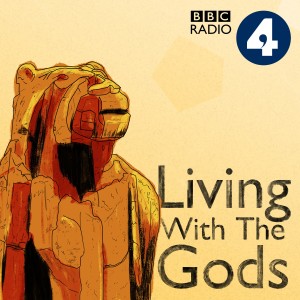
Neil MacGregor, former Director of the British Museum, begins this series about the role and expression of shared beliefs with the Lion Man, a small ivory sculpture which is about 40 000 years old. The figure has a human body and the head of a lion - it is a being that cannot exist in nature. While we shall never know what the Lion Man meant to the community in which it was created, we do know that it mattered enough for the group to allow someone to spend about 400 hours carving it.
The programme visits the cave in southern Germany where fragments of ivory were discovered in 1939. These fragments were gradually pieced together by archaeologists decades later to re-assemble the figure. Some smoothing on the torso suggests that the Lion Man was passed from person to person in the cave.
Neil MacGregor begins the series with this object because, in his words, 'what the archaeologists did as they pieced together the Lion Man is what societies have always done: work with fragmentary evidence to build a picture of the world. You could say that it's when a group agrees on how the fragments of the cosmic puzzle fit together that you truly have a community - one that endures, encompassing the living, the dead and the yet unborn. What this whole series is about is the role that such systems of belief - and perhaps even more the rituals that express those beliefs - have played in the creation, and sometimes in the destruction, of societies. Are we humans distinguished not just by a capacity to think, but by our need to believe - in a context where the search is not so much for my place in the world, but for our place in the cosmos - where believing is almost synonymous with belonging?'
Producer Paul Kobrak
The series is produced in partnership with the British Museum, with the assistance of Dr Christopher Harding, University of Edinburgh.
Photograph: (c) Museum Ulm, photo: Oleg Kuchar, Ulm.
view more
More Episodes
Living with Each Other
 2017-12-01
2017-12-01
 121
121
 2017-12-01
2017-12-01
 121
121
The Search for a State
 2017-11-30
2017-11-30
 108
108
 2017-11-30
2017-11-30
 108
108
Turning the Screw
 2017-11-29
2017-11-29
 113
113
 2017-11-29
2017-11-29
 113
113
Living with No Gods
 2017-11-28
2017-11-28
 101
101
 2017-11-28
2017-11-28
 101
101
Ruling with the Gods
 2017-11-27
2017-11-27
 87
87
 2017-11-27
2017-11-27
 87
87
Gods Living Together
 2017-11-24
2017-11-24
 148
148
 2017-11-24
2017-11-24
 148
148
Global Gods, Local Needs
 2017-11-23
2017-11-23
 135
135
 2017-11-23
2017-11-23
 135
135
The Other Side of the Leaf
 2017-11-22
2017-11-22
 163
163
 2017-11-22
2017-11-22
 163
163
Living with One God
 2017-11-21
2017-11-21
 162
162
 2017-11-21
2017-11-21
 162
162
Living with Many Gods
 2017-11-20
2017-11-20
 146
146
 2017-11-20
2017-11-20
 146
146
Rejecting the Image
 2017-11-16
2017-11-16
 179
179
 2017-11-16
2017-11-16
 179
179
Change Your Life
 2017-11-16
2017-11-16
 130
130
 2017-11-16
2017-11-16
 130
130
The Making of Meaning
 2017-11-15
2017-11-15
 159
159
 2017-11-15
2017-11-15
 159
159
Replicating the Divine
 2017-11-14
2017-11-14
 170
170
 2017-11-14
2017-11-14
 170
170
The Protectoresses
 2017-11-13
2017-11-13
 177
177
 2017-11-13
2017-11-13
 177
177
Festivals
 2017-11-10
2017-11-10
 2017-11-10
2017-11-10
To Be a Pilgrim
 2017-11-09
2017-11-09
 179
179
 2017-11-09
2017-11-09
 179
179
Holy Killing
 2017-11-08
2017-11-08
 199
199
 2017-11-08
2017-11-08
 199
199
Gifts to the Gods
 2017-11-07
2017-11-07
 264
264
 2017-11-07
2017-11-07
 264
264
The House of God
 2017-11-06
2017-11-06
 228
228
 2017-11-06
2017-11-06
 228
228
012345678910111213141516171819
Create your
podcast in
minutes
- Full-featured podcast site
- Unlimited storage and bandwidth
- Comprehensive podcast stats
- Distribute to Apple Podcasts, Spotify, and more
- Make money with your podcast
It is Free
- Privacy Policy
- Cookie Policy
- Terms of Use
- Consent Preferences
- Copyright © 2015-2024 Podbean.com





